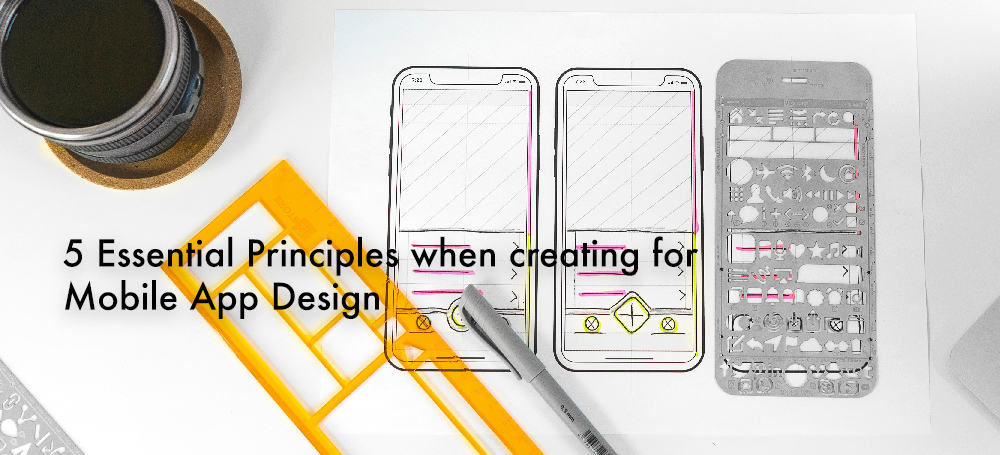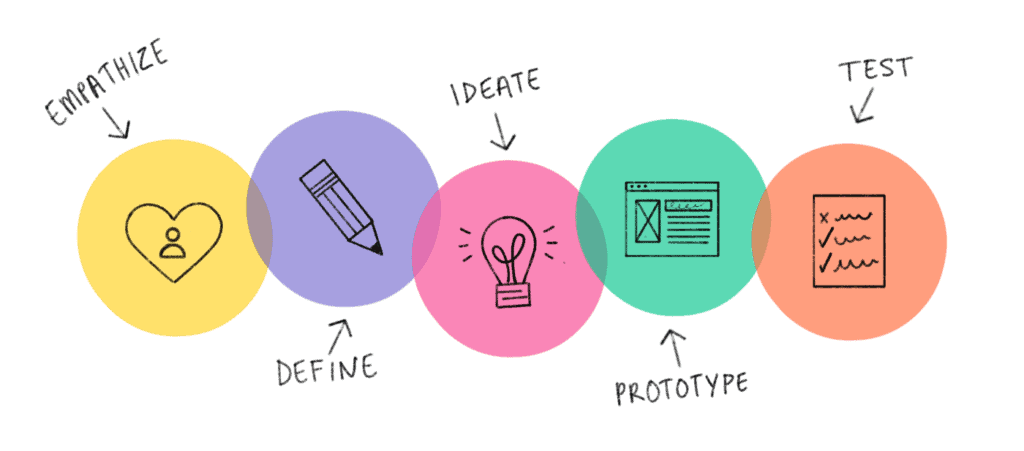

5 Simple Guidelines for Mobile app design
As mobile devices have become increasingly ubiquitous, it is essential that designers are aware of the best practices when considering a mobile app design strategy.
Mobile devices can present unique challenges and opportunities, so it is important to understand the considerations to keep in mind when creating a user-friendly experience. In this blog post, We will provide simple guidelines to help designers create a successful mobile app design. By following these easy steps, designers can ensure that the mobile experience of their product is optimized for the user’s needs. From user interface design to keeping up with mobile trends, these simple guidelines will be an invaluable asset as they create and refine their mobile design.
1. Understand urgency and medium
When designing for mobile app, it is important to understand the urgency and medium of the situation. Mobile UI designs must be optimized for the context and environment in which they will be used. This means understanding the user’s needs, motivations, and goals, as well as the available interactions within the app. It also means being aware of the user’s physical conditions, such as whether they are in a hurry or have limited screen space. This will help you to create designs that are tailored to the user’s situation and are easy and efficient to use.
2. Adapt to the customer’s behavior
One of the most important guidelines when you design for mobile is to adapt to the customer’s behavior. Mobile users are often on the go, so they’re likely to be looking for something quickly and easily. Make sure your design allows them to find what they’re looking for quickly and without too much effort. Consider including elements such as “back” buttons and easy navigation. Also, consider designing with “touchpoints” in mind, so that the user’s finger is guided to the correct elements on the screen. This will ensure that your design is optimized for a smooth user experience.
3. Adapt to context
Context is an important factor to consider when designing for mobile devices. Different users will be using your product in various contexts, and the design must be able to adapt to those contexts. For example, the interface should be able to adjust to the user’s location, their device’s orientation, and the network connection. In addition, you should also think about how your product will be used in different contexts, such as at home, in the office, or on the go. By understanding and adapting to context, you can ensure your product will be a success with users.
4. Enable the customer to adapt
Enable the customer to adapt” is a key concept when designing for mobile app. Mobile devices have small screens and limited interaction options, so it’s important to give users the ability to customize their experience. This could include giving them options to rearrange the order of items in a menu or the ability to adjust the size of a text box. By giving them the power to customize the experience, you’ll make them feel more in control and increase their engagement with your product.
5. Reduce mental cost
The fifth key factor to consider when designing for mobile is reducing “mental cost.” Mental cost is the amount of cognitive effort a user expends when using an interface. The goal is to make it as easy as possible for the user to understand and access the features of an app. This can be done by utilizing familiar patterns and navigation, removing unnecessary features, and focusing on clarity over complexity. Additionally, you should ensure that the mobile product is optimized for the device on which it’s being used. This will reduce the user’s mental load and make the experience more enjoyable.

Basic Design Considerations for the Mobile Web
When designing a website for mobile devices, there are several basic design considerations that you should keep in mind. First, make sure that the layout is responsive and optimized for smaller screens. This includes making sure that all elements of the page such as text, images, and buttons are easily visible and navigable on a small screen. Secondly, it is important to consider the device’s capabilities and design accordingly so that your content works across platforms. Thirdly, keep file sizes small for faster loading times. Finally, consider device battery life and design your app to minimize power consumption. Following these simple guidelines when you design for mobile will ensure a successful user experience.
Prioritize the Primary Task
One of the most important guidelines when you design for mobile is to prioritize the primary task. The primary task is the most important purpose of the app or website—the action that you want the user to take. This primary task should be made as simple and accessible as possible. For example, when designing an e-commerce website, the primary task might be to allow the user to purchase an item quickly and easily. Make sure this action is front-and-center on the page, and minimize any secondary tasks that could get in the way. Simplifying the primary task will create a more user-friendly experience for your customers.
Keep Navigation Simple
A key design principle for any mobile device is to keep navigation simple. People should not have to click through multiple pages to get to their desired content. Navigation should be intuitive and easy to identify, with a maximum of two steps to get to the desired page. It is also important that the navigation bar remains fixed at the top or the bottom of the screen, allowing users to quickly switch between pages. Furthermore, it is recommended to use recognizable icons rather than text to indicate the various destinations, so users do not have to read through a list of labels.
Take Away
In conclusion, designing for mobile platforms is a unique challenge that requires an understanding of the user’s needs and preferences. By keeping a few simple guidelines in mind, such as creating a clear hierarchy, designing for the thumb, and ensuring consistent branding, you can create mobile designs that are both intuitive and visually appealing. By adapting your designs to the mobile platform, you can ensure that your users get the best possible experience.
We, at Roars Technologies, are dedicated to providing exceptional UX/UI services to startups and businesses who want to make a difference in their industry and connect to their customers in a better way. Let’s talk and find out how we can build you a phenomenal UX for your product.
